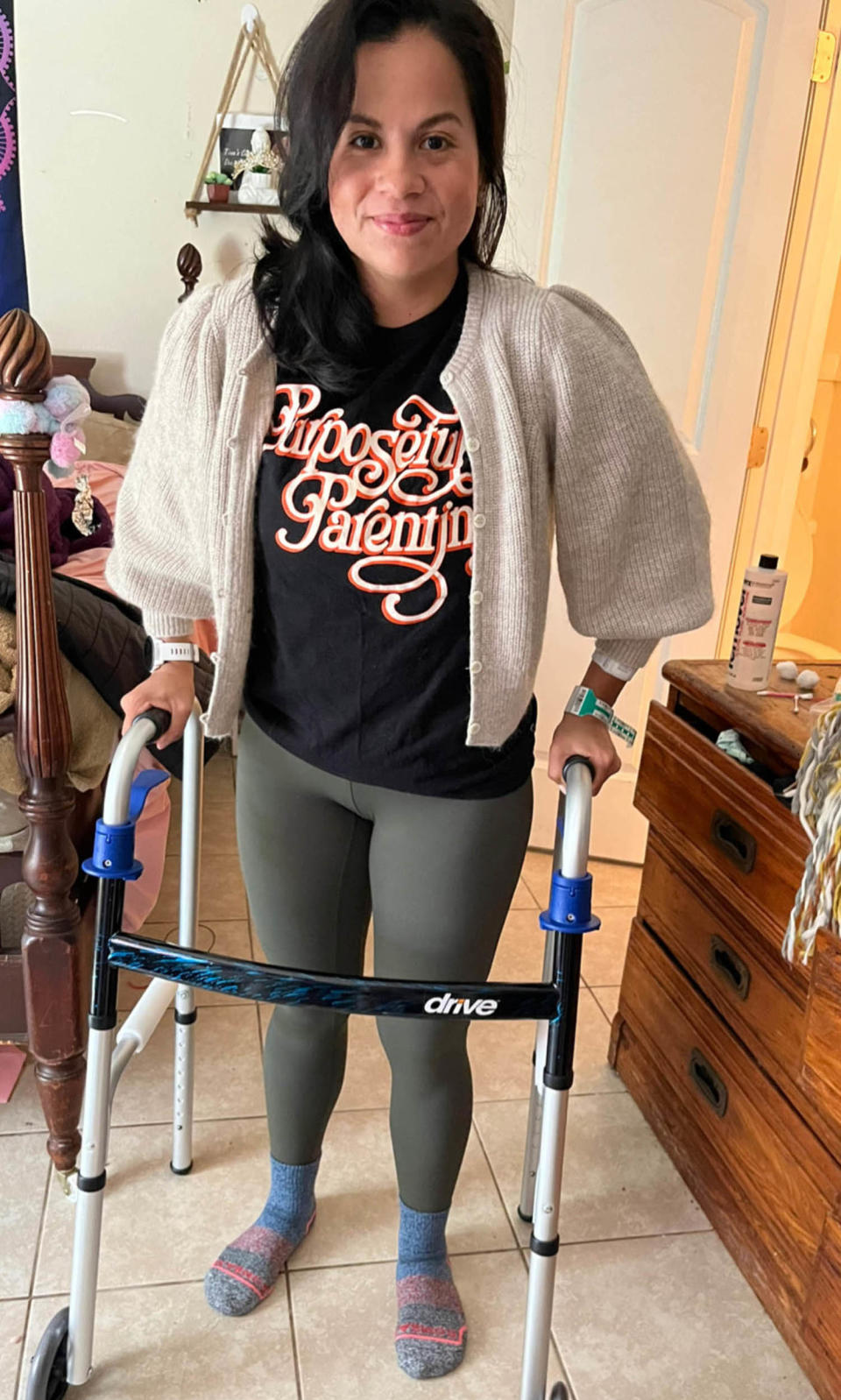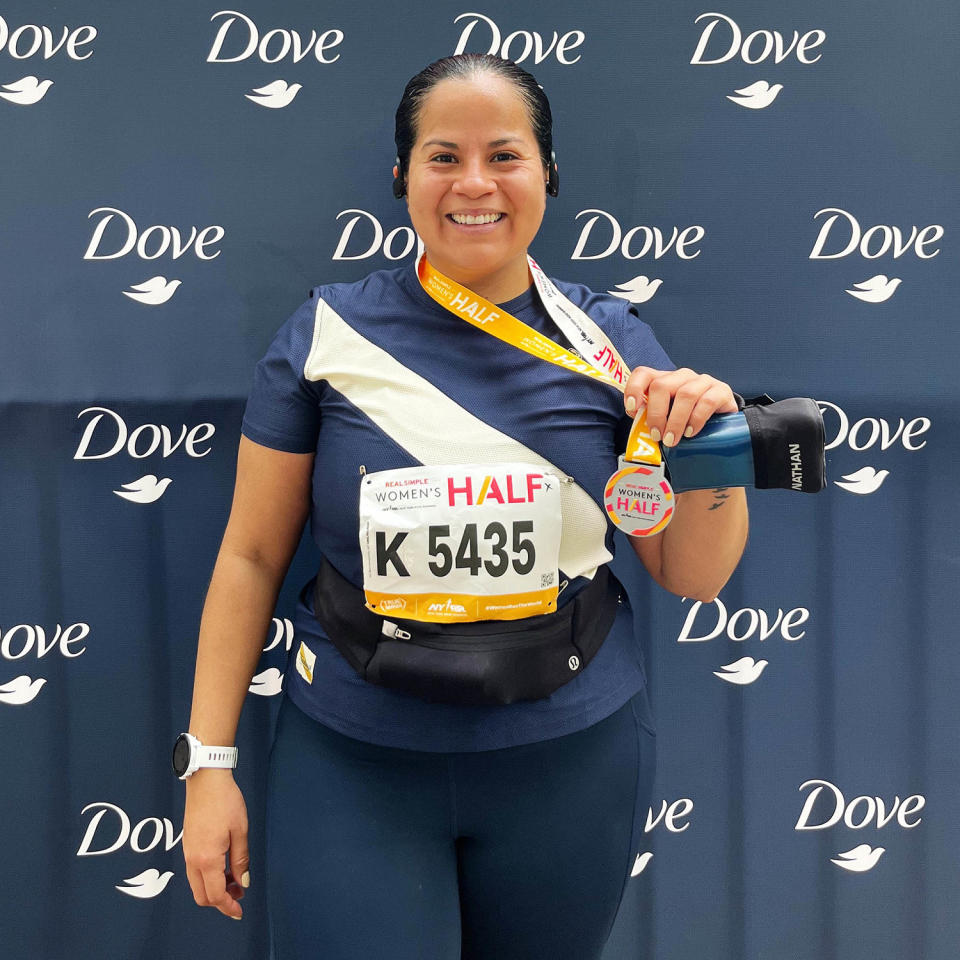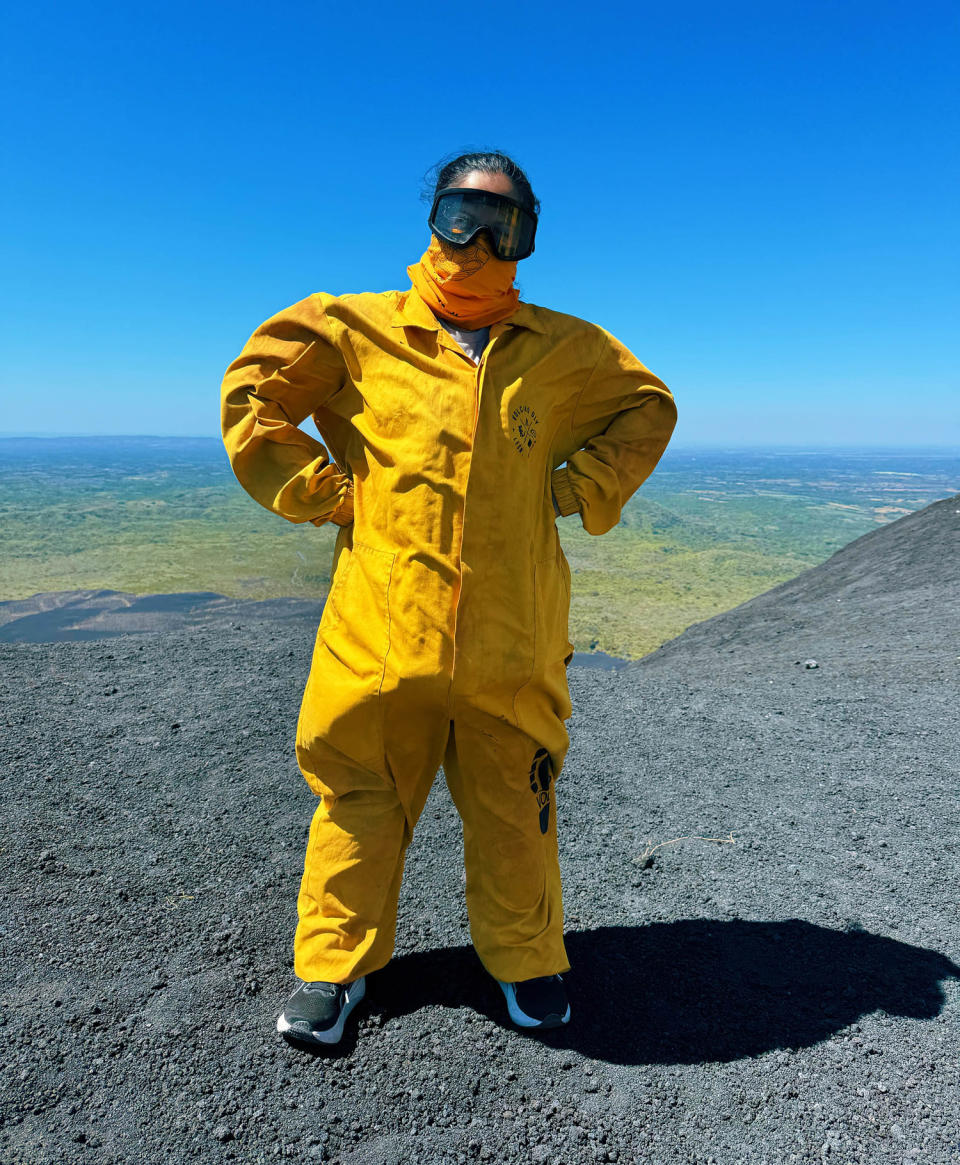‘Brutal car accident’ left runner with spine injury. Two years later, she ran a half marathon
Welcome to Start TODAY. Sign up for our Start TODAY newsletter to receive daily inspiration sent to your inbox — and join us on Instagram!
Kaylen Ardiles-Cervera loved running. “I found with running, the only metric is me. There was such a joy in that, and in seeing how much more capable my body was becoming. Stamina changes everything,” she tells TODAY.com.
By December 2021, she had been running for five years, and she was training for the New York City Marathon when her life took a drastic turn.
She had flown to Florida to celebrate her sister’s birthday. “I was en route to drop off decorations at the banquet hall, and I was struck by a car coming in the opposite direction,” she says. “It was a distracted-driving situation.”
Her car almost flipped over. She woke up in the ICU a couple of days later with a concussion, inflammation, and nerve and spinal cord damage. A protective brace encased her: “My body just felt like lead. It was pretty brutal,” she says.
Ardiles-Cervera had always been able to depend on her body for strength and stamina. Now, she couldn’t move one side at all: “Because of the amount of inflammation from the impact, one side of my body was just not responding.”
There was no timeline for when — or if — she might recover. One doctor had a long conversation with her, where he painted a bleak picture and tried to set her expectations at the bare minimum.
“He wrote off a lot of things. He said I should just be content with walking, and we could see what happens once I get through physical therapy. I was so idealistic. I had no idea what I was in for. In my mind, I thought, ‘I’ll start walking really easily,’” she says. “It was difficult to find my new norm.”

Navigating the road to recovery
Ardiles-Cervera was hospitalized in Florida, hundreds of miles from her New York City home, with neurologists, orthopedists and physical therapists caring for her. She had gone from running miles with ease to trying to learn how to maneuver from a bed to a wheelchair safely.
She had to adjust her expectations. “Something in my mind finally clicked — I’m really not running that marathon. I can barely sit. That’s not happening,” she says.
After a few weeks of medical care in Florida, she was able to move. Instead of returning to New York, she went to Atlanta, where she has a lot of family, and her grandparents have an accessible home and bedroom.
Coming to terms with her limitations was a challenge: “You don’t realize how much you take for granted.” She couldn’t get to the bathroom alone or make her own breakfast.
“There was such a weird shift in my life, from running around in circles to being in one specific space. I think that was the hardest part,” she says.
Over time, she transitioned from a wheelchair to a walker and finally to a cane. “I think I probably pushed it too much at first. The minute I found out I could go to the walker, I thought, ‘This is all I need. I can do this,’” she says.
“There was some part of my brain that kept saying I could work through this faster if I was more diligent, and that’s not the way recovery is.” Trying to rush set her back. She would have flares and lose mobility. Finally, after nine months in Atlanta, she was strong enough to return home to New York to continue her recovery there and go back to work as a doula.
Getting back to running, one step at a time
It was early 2023 before Ardiles-Cervera could try running again. That spring, she ran for two miles for the first time since the accident: “I still have a photo of that day. Just to run two miles was a lot for me. It was such a humbling moment.”
To help care for her body, she has pelvic floor physical therapy and cranial sacral therapy, and she sees a chiropractor and an acupuncturist: “Even now, present-day, post-crash, my body is significantly different. I have to do a lot of bodywork maintenance to be able to run. One side of my body has some pelvic instability from the impact. I also have issues with one hip, and sometimes my shoulder will flare up when I’m doing long distances.”
She also has physical therapy specifically for running. “I stayed at an easy, even base of two to four or five miles, and I wasn’t able to push past that without significant pain. I knew I needed a PT who specialized with runners to help me learn how to get back to distance,” she says.
She admits that getting back to running longer distances has been painful. “I don’t want to sugarcoat that. I would run before the crash with such ease. If I was having a bad day, going for a run would bring me real joy, and then it swapped to, ‘How do I tolerate this?’ I had to learn that discomfort is OK, but pain is not.”
Coping with PTSD: Flashbacks, nightmares and a fear of cars
It wasn’t only Ardiles-Cervera’s body that had to recover from the accident. She struggled with mental health issues as well. At first, she only had one memory of the accident — she recalled clinging to the side of the steering wheel when the car was about to flip, which may have kept her from driving into a reservoir.
But memories came back. “I had bad nightmares of the sound of the cars and the screeching,” she says. “I was diagnosed with PTSD after the crash. I started having severe flashes, I was constantly flinching and I wouldn’t get anywhere near cars. The flashbacks were so intense that it would take a while to ground myself and understand where I was. I would feel the heat of the car.”
Eye movement desensitization and reprocessing (EMDR) and therapy helped. “I had a really great trauma-informed therapist who helped me process a lot of my residual feelings. I struggled with the idea that I had such a fixed concept of my body before. I always associated my body with functionality,” she says. “You don’t recognize how much ableism is in your mindset until you’ve experienced what it is to not have functionality at a base level.”
Her brain had to recover from the concussion as well. She had trouble connecting pieces of daily activities. “I would start doing something and forget to go back to it. They told me to give it time and not get too fixed on it. They said it was normal, and I said, ‘Not for me.’” But over time, her cognitive ability returned.

Racing again and pushing her body’s limits
Ardiles-Cervera is participating in the New York Road Runners' 9+1 program. In it, you run nine races and volunteer at one event in 2024 to earn a guaranteed spot in the 2025 TCS New York City Marathon.
She completed the first of the nine races in April, when she ran NYRR's Real Simple Women’s Half Marathon — her first race since the accident.
“I was definitely emotional when I was finishing the race. I think it sunk in that I had trained for such a long time. I had this really sincere feeling of gratitude that I was able to finish and that my body still felt good,” she says.
She’s also jumping into activities she wasn’t sure she’d be able to do after the accident. “Since the end of last year, I have been able to exist with such a freedom within my body that I haven’t had in a long time. I learned how to scuba dive. I’m learning how to horseback ride. There are so many things I had on a list before that I always thought I would have more time to do. Now I want to see what my body can do.”

This article was originally published on TODAY.com

